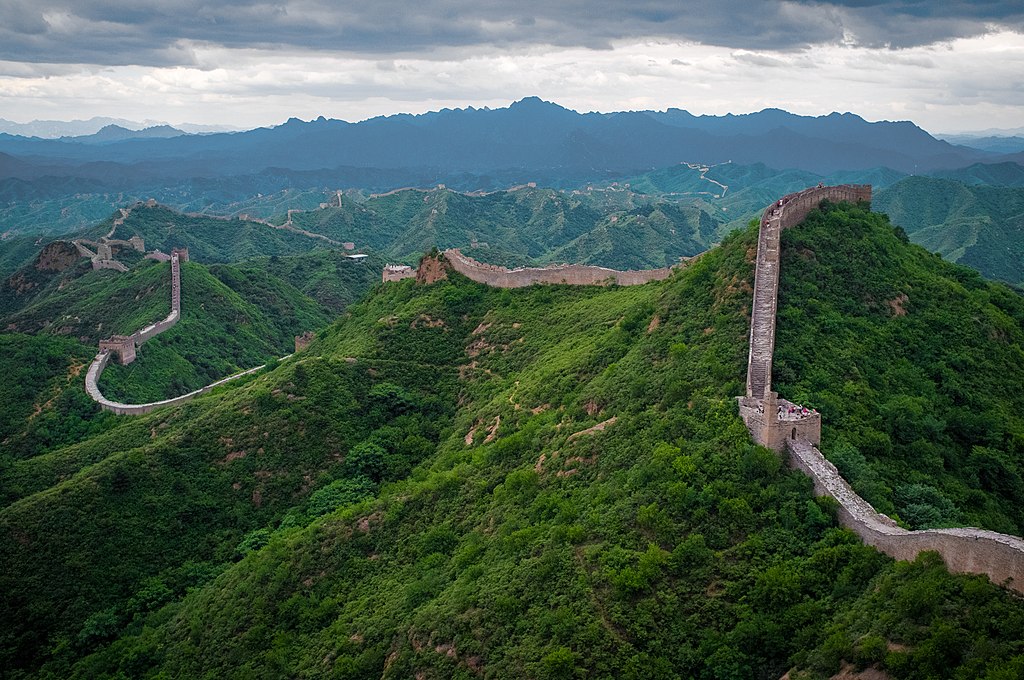Amidst coronavirus, I’m sticking to what I – and a lot of other people – love most: cooking and baking. One challenge I’ve presented to myself is to make a dish (or dishes) of international cuisines every week, learn some words from the language, and e-visit some of the country’s landmarks. Some of these dishes will be more complex than others, based on what ingredients I have available in the house.

My family rarely does takeout, but recently, we tried out an old-favorite Chinese restaurant and were underwhelmed. We had completely forgotten how much oil was in the dishes. With that in mind, I realized that I should take on Chinese cuisine and make dishes, as always, from scratch.
As a side note, this was my brother’s favorite country so far!
A typical Chinese meal will have either rice or noodles, with a type of stir fry of vegetables, fish, and meat. In North China, wheat-based carbs like noodles and buns are most popular, while in South China, short-grain sticky-rice is more of a staple. Sauces in Chinese cuisine include ingredients like fish sauce, oyster sauce, soy sauce, garlic, and ginger.
Chinese food is heavily influenced by Confuscianism and Taoism. One of Confucius’ standards was that food must be cut into small bite-sized pieces before serving it. A Taoist diet is based on eating locally-grown food, warm food, and whole foods.
For this post, I decided to do one “Buddha”-style bowl, with three Chinese dishes.
THE DISH: ‘GENERAL TSO’ BROCCOLI AND KUNG PAO EDAMAME WITH JADE PEARL RICE (GF + V)
A couple years ago, my mom and I attended a “bowl” class at the Natural Gourmet Institute in New York City (it has unfortunately closed down since then). Working in pairs, we created a bowl, and one of the groups made these delicious recipes. The bowl in all does take up a bit of time (over an hour), but it’s so. much. better than ordering take out – not to mention healthier!

GENERAL TSO’s BROCCOLI
While ‘General Tso’s chicken’ is a staple on nearly every Chinese menu in the United States, the dish, named after a 19th century Hunanese general, was first cooked in a Taiwanese restaurant in the 1950s, according to smithsonianmag.com. Moreover, the general never ate anything like ‘General Tso’s chicken’.
To make this plant-based, I swapped chicken for broccoli. This dish was not oily, but was still super flavorful, and had a nice crunch from the broccoli. My brother is not a broccoli fan, but he proclaimed this to be the best broccoli dish ever.


KUNG PAO EDAMAME
Kung Pao is a spicy stir fry dish usually made with chicken, peanuts, vegetables, and chili peppers. For this vegan version, edamame was used instead. The dish originated from the Sichuan Province of China, and is believed to be named after a Qing Dynasty official.
This dish has a slight tang, a good amount of spice, and can be enjoyed entirely by itself. I actually put my leftover on a bed of steamed spinach the next day and it was absolutely delicious.

JADE PEARL RICE

The Natural Gourmet institute paired this dish with black rice, but I recently discovered Jade pearl rice which tasted delicious. Jade pearl rice is a Chinese short grain rice that is infused with bamboo extract, giving it a light green hue. The bamboo extract actually provides the rice with more antioxidants, and it has the same amount of protein as brown rice. Non-brown rice lovers – like my brother – will find this to be a delicious alternative to typical white rice. I got my Jade pearl rice from Lotus Foods.
If you’re looking for an extra protein boost to this bowl, consider swapping rice with quinoa.
USEFUL WORDS
The official dialect in China is Mandarin, which 70% of the population speaks (see below). Other dialects include Yue (Cantonese), Xiang (Hunanese), Min, Gan, Wu, and Keja.
Greetings
- Nǐ hǎo or Nǐn hǎo (formal) –> Hello
- Zǎo shang hǎo –> Good morning
- Wǎn shàng hǎo –> Good evening
- Zuì jìn nǐ zěn me yàng –> What’s up?
- Nǐ hǎo ma –> How are you?
- RESPONSE: Wo hěn hǎo –> I’m good
- Zàijiàn –> Goodbye
Conversation
- Nǐ cóng nǎlǐ lái? –> Where are you from?
- RESPONSE: Wo láizì ____ –> I’m from ____
- Nǐ jiào shénme míngzi? –> What’s your name?
- Wo de míngzì shì ___ –> My name is ___
- Nǐ xǐhuān zuò shénme? –> What do you like to do?
- RESPONSE: Wo xǐhuān ___ –> I like to ___
- Tiàowu –> Dance
- Zuò –> Cook
- Luxíng –> Travel
- RESPONSE: Wo xǐhuān ___ –> I like to ___
- Xiè xie –> Thank you
- Xiè shén me ne –> You’re welcome
LANDMARKS
China is home to some of the world’s oldest civilizations. Let’s take a look!
Great Wall of China, Huairou District

The Great Wall of China was built 2,700 years ago across the historical borders of China as protection. Fun fact: the wall is the longest man made structure in the world, at 13,170.7 miles.
Forbidden City, Beijing

The Forbidden City is a palace complex that was the imperial palace and state residence of the Emperor of China. Between 1420-1924, it housed the Ming dynasty to the end of the Qing dynasty.
Chengdu Research Base of Giant Panda Breeding, Sichuan

The Chengdu Panda Base is a non-profit research and breeding facility for giant pandas and rare animals.
Summer Palace, Beijing

The Summer Palace was an imperial garden in the Qing dynasty. Visitors can take a 10 minute boat-ride to see around the temples and watch a traditional Chinese performance.
Baì baì!